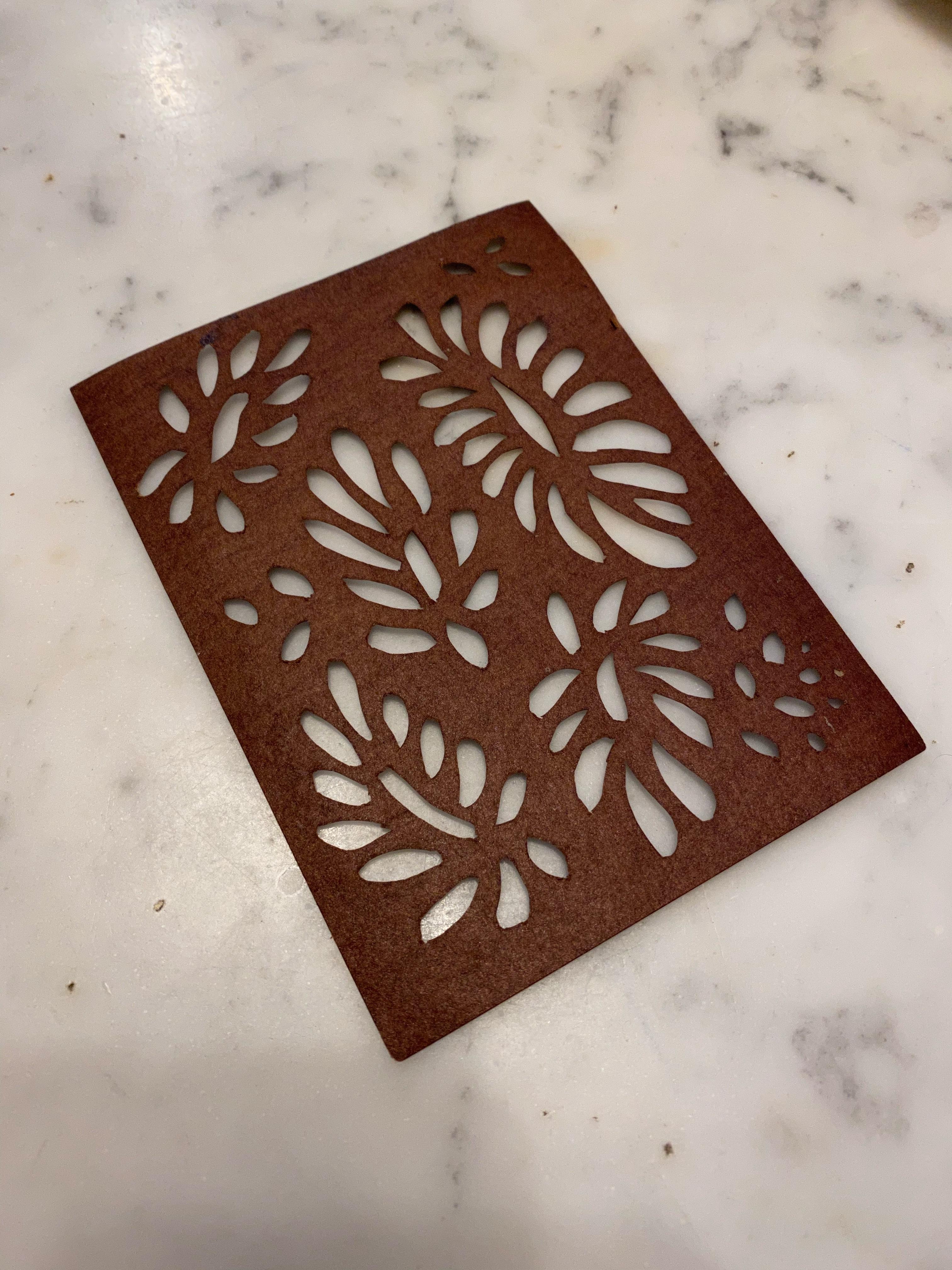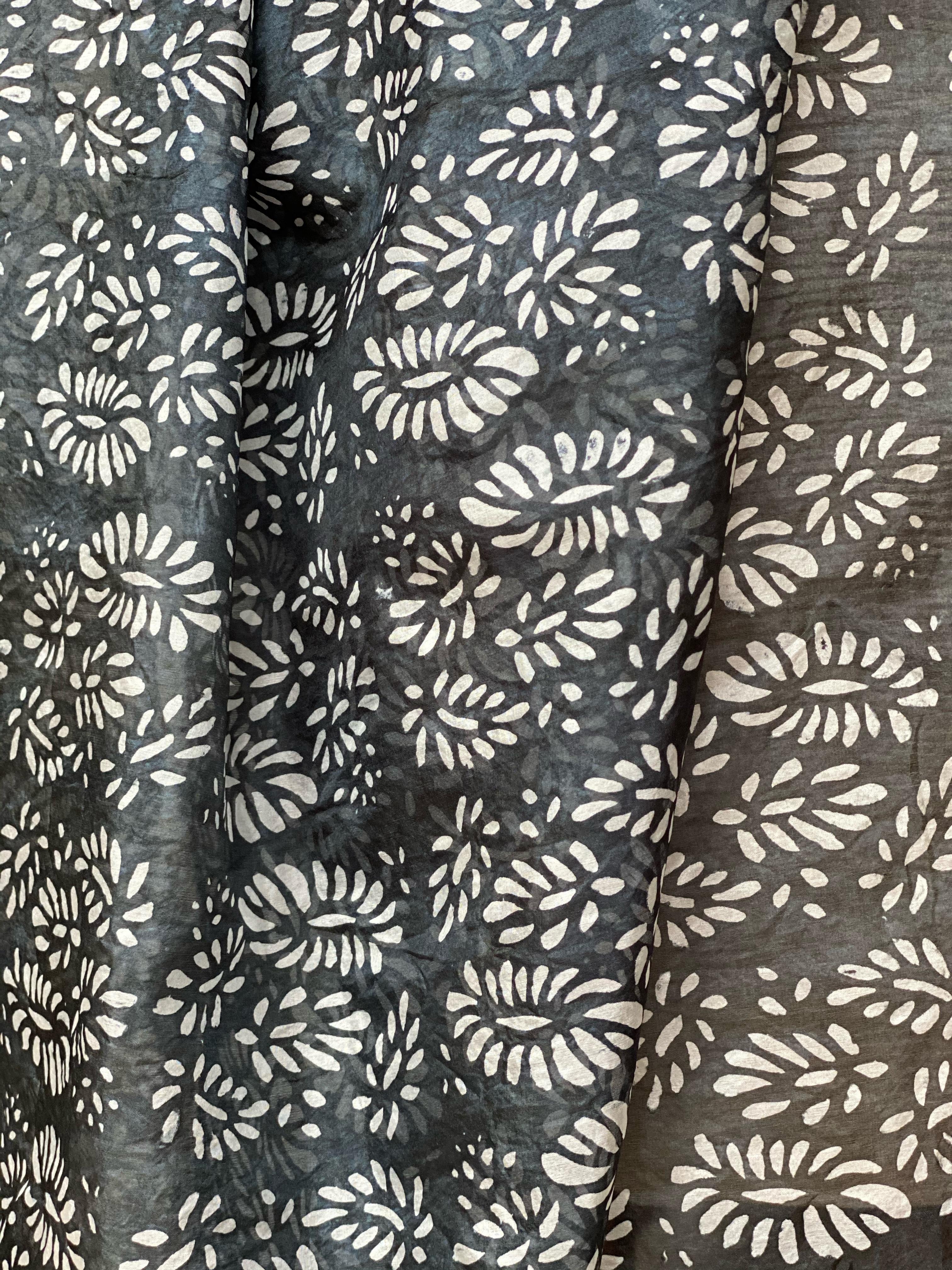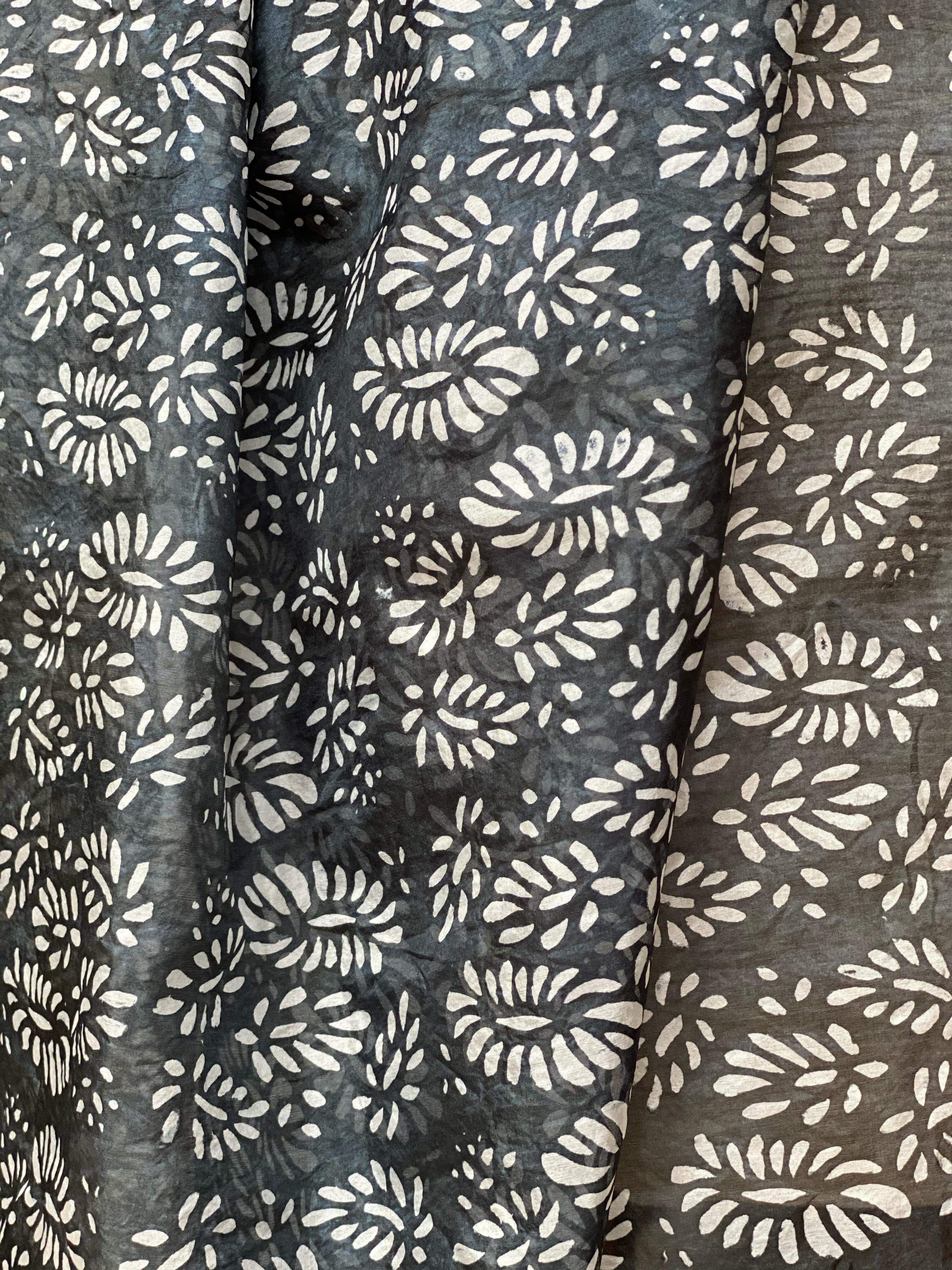Katazome
Katazome is a Japanese stencil dyeing technique, which has been used in Japan for hundreds of centuries.
The stencils are made of Katagami paper, which is handmade by laminating mulberry paper layers that have been immersed in fermented persimmon juice known as kakishibu. This makes the paper water resistant and durable. There is only one family left in Japan who is still making this paper in the traditional way.
Once the design has been carefully cut into the Katagami paper it is ready to use.

The silk is secured onto a sheet of glassine paper and using a plastic card, such a credit card, the resit paste is scraped over the stencil. The stencil is gently lifted and moved into the next position and the process repeated until all of the fabric has been completely covered.
The resist paste is made from rice flour and bran, which has the consistency of a sticky wall paper paste. The resist paste forms an area where the dye can not penetrate.

once the silk has been printed, it is left to dry thoroughly before applying the dye. in this example we have used a fibre reactive charcoal dylon dye which is thickened with sodium alginate and mixed thoroughly before being rollered or brushed onto the silk.

Once the silk has been completely coated in the dye, it is then carefully folded, with the glassine paper still attached, placed into a sealed plastic container and steam fixed in a microwave for a few minutes.
The glassine paper can then be carefully removed, which it left with an identical imprint off the design.
It far too beautiful to discard and can be re-used as gift wrap.

The silk then needs to be gently, but thoroughly washed in cold water until all of the rice paste has been removed and the water runs clear.

The stencils are made of Katagami paper, which is handmade by laminating mulberry paper layers that have been immersed in fermented persimmon juice known as kakishibu. This makes the paper water resistant and durable. There is only one family left in Japan who is still making this paper in the traditional way.
Once the design has been carefully cut into the Katagami paper it is ready to use.

The silk is secured onto a sheet of glassine paper and using a plastic card, such a credit card, the resit paste is scraped over the stencil. The stencil is gently lifted and moved into the next position and the process repeated until all of the fabric has been completely covered.
The resist paste is made from rice flour and bran, which has the consistency of a sticky wall paper paste. The resist paste forms an area where the dye can not penetrate.

once the silk has been printed, it is left to dry thoroughly before applying the dye. in this example we have used a fibre reactive charcoal dylon dye which is thickened with sodium alginate and mixed thoroughly before being rollered or brushed onto the silk.

Once the silk has been completely coated in the dye, it is then carefully folded, with the glassine paper still attached, placed into a sealed plastic container and steam fixed in a microwave for a few minutes.
The glassine paper can then be carefully removed, which it left with an identical imprint off the design.
It far too beautiful to discard and can be re-used as gift wrap.

The silk then needs to be gently, but thoroughly washed in cold water until all of the rice paste has been removed and the water runs clear.


